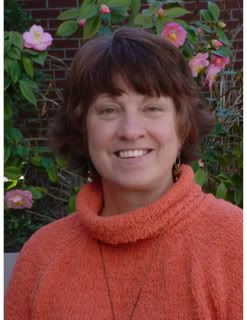Tuesday, January 30, 2007
Westminster Canterbury Richmond shares their community's "Critical Issues"
Libby Bacon Bush
Vice President of Resident Services
Libby has been at Westminster Canterbury for 14 years. As Vice President of Resident Services, she is ultimately responsible for all areas of Independent Living, Assisted Living, Wellness, Salon Services, Galleria Shops, Front Desk, and Transportation.
After graduating from the
Libby has attained her Retirement Housing Professional Certification, and is a licensed Nursing Home Administrator. She is currently enrolled in the Virginia Commonwealth University CCRC Leadership Program. She has presented over the years on various long-term care topics, including assisted living, memory support and, most recently, culture change.
Born in
1. Culture change (Project Home) impact continuum wide
2. Meeting/exceeding expectations of current and future resident generations, i.e. creating increased flexibility, independence and choice within our community
3. Recruitment, retention & management of “World Class” staff
4. Create a community wide wellness culture
5. Complete current campus renovation plans while planning for future projects, to include aging in place consideration, service creep review etc.
Labels: KEY DECISIONS, wellness program
Friday, January 26, 2007
Jan. 26th SCANPHA participants: we want to hear from you!
Following up on the “Dancing in the Rain” introduction to the Vitalife Community Wellness Program that you learned about at SCANPHA, we now need to hear from you!
Labels: CEO, DANCING IN THE RAIN, JON PERSAVICH, KEY DECISIONS, wellness program
Monday, January 08, 2007
Still Hopes' Top 5 Critical Issues
 Still Hopes’ Wellness Director Denise Heimlich lists her community’s critical issues…
Still Hopes’ Wellness Director Denise Heimlich lists her community’s critical issues…Top 5 critical is
1. Overcoming the stigma relating to mental and emotional health. We must educate on how mental and emotional health impact physical health and get people to take this seriously. Problems must be confessed and the sufferer must feel motivated to seek help and understand that solutions are possible. Depression, anxiety, low self-esteem, lack of purpose, etc. are major problems in the population, regardless of age, but are typically viewed by the sufferer as personal failure that must be hidden. Older adults must understand that these types of problems are different from dementia and feel secure that he or she will not be moved into dementia units because they are crazy.
We professionals must have access to resources to help people. We must offer support groups, and counseling. First and foremost, we must make residents understand that we are all working toward improved mental and emotional health (at least I am!) This is a continuing journey in which each person must take an active part and personal responsibility.
2. Matching dining room food choices to nutritional education. Where I work, the registered dietician and I are having trouble offering nutritional education because the residents cannot fully use this information with the limited number of dining selections available. Some of our residents and staff really want to make healthier food choices, but their selections are limited.
3. Residents isolating themselves within their level of care and ostracizing those in higher levels of care. This attitude does not fit in a wellness model. There is no spirit of community that encompasses the entire campus. Not enough independent living residents volunteer to help those residents in higher levels of care and do not welcome “able” assisted-living or skilled nursing residents into IL activities. This problem leads into the problem listed as number 4:
4. Residents hiding or denying disability in order to remain designated as Independent. Health and longevity can increase if one is getting needed support. There may be solutions within IL or moving to another level of care may cause that disabled person to thrive again. I’m really tired of residents working against themselves and driving down their own fitness and health or that of their spouse just to hang on by fingernails in an IL cottage or apartment.
5. More effective pain relief and reduced pain medication. Pain stems from many causes such as osteo and rheumatoid arthritis, spinal stenosis, muscle imbalance, and fibromyalgia, but is typically medically treated with only pain medication or surgery. Valid research has shown that pain can be eliminated or reduced with alternative therapies such as exercise, massage, yoga, meditation, humor, and many other methods. A significant portion of the older adult population has pain, but is uneducated about how an individual can positively or negatively influence his or her own pain. The burden of education for pain relief seems to fall to us since the traditional medical community remains woefully insufficient in this matter. We must first educate ourselves so that we don’t fall victim to charlatans and false research. In my region, there seems to be few resources for alternative therapies. We have a Pain Clinic in my community that is sanctioned by a local hospital. My excitement upon learning about this clinic has turned to disappointment because, to date, I have observed only pain medication being dispensed from there. I have seen no evidence of biofeedback, exercise or yoga recommendations, or any other non-medical/non-pharmaceutical solutions. Additionally, my region does not have many alternative therapy practitioners. I have taken upon myself the task of pain education and have begun to relay this information to my community.
Labels: KEY DECISIONS, wellness program

